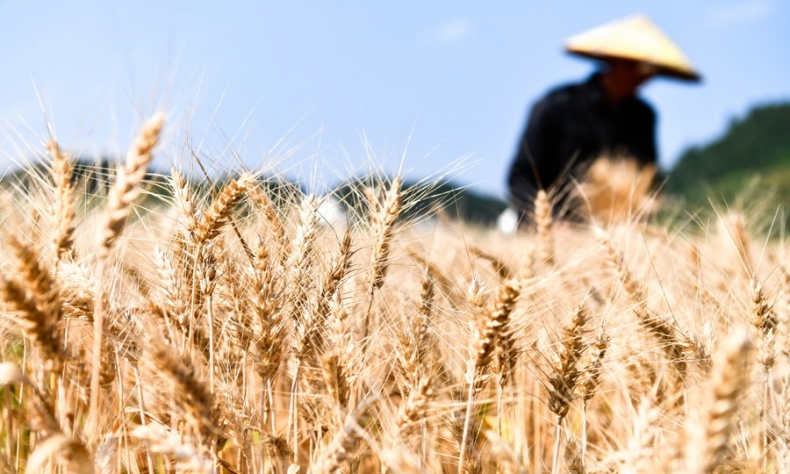Grain Security

China’s increasing food self-sufficiency helps alleviate the pressure on global grain supplies and contributes to the stability of the global grain market.
China’s summer grain output hit a record high of 149.78 million tons this year, 3.63 million tons higher than that of last year, according to the National Bureau of Statistics. In China, summer grain mainly consists of wheat, while grain harvested in autumn includes rice, corn and other crops.
Grain security, liangshi anquan, is often used as a term for food security in China, reflecting the importance of a stable supply of grain for feeding the country’s people. For this reason, this year’s record grain harvest also represents a step forward in enhancing food security, which has been a national focus in recent years.
Wheat is one of China’s most important crops, as the main ingredient in most noodles, buns and dumplings, which have been important in the Chinese diet for millennia. In China, wheat is mainly grown in the northern regions, especially on the North China Plain, and large-scale mechanical harvesting of wheat can be seen every summer in the rural areas of north China.
While grain prices in China are generally set by the market, the government has set a minimum purchase price for grain since 2004. Under the scheme, the government buys grain from growers at the state-set price if the market price falls below it. Before wheat sowing began this year, the government announced that this state-set price would be 20 yuan ($2.75) higher per ton than last year to better incentivize its production. This price increase was a major contributing factor in reaching the new record, as it helped increase the total area sown with wheat by around 4,500 hectares. Improvements to land management and seed quality are also contributing factors.
Enhancing summer grain output, and therefore grain security, ensures China’s self-sufficiency and strengthens its ability to secure its grain supply. This allows China to ensure stable grain prices. Increasing grain output is conducive to balancing market supply and demand and preventing price fluctuations caused by grain shortages. Also, bigger summer harvests will increase grain growers’ incomes, which is an effective way to balance urban and rural development and regional development in China and increase living standards.

New records in grain production have come in quick succession in recent years, a positive sign not just for food security, but also for the state of agricultural development. As more and more young people move to cities, concerns have emerged about who will continue farming the land and producing food. Regularly setting new records in grain production shows increasing output is achievable despite these demographic shifts. Bigger harvests also greatly promotes rural economic growth, stimulating the development of related industrial chains and increasing job opportunities in rural areas.
Food insecurity is an ever-present global problem and is currently being exacerbated by conflicts and climate change. China’s increasing food self-sufficiency helps alleviate the pressure on global grain supplies and contributes to the stability of the global grain market. The stability and growth of grain output in China, a large, populous country, will be the greatest contribution it can make to international food security.
Considered grains when discussing food security, soybeans are the major grain crop China imports and are mainly imported for use in producing edible oil and as feed for livestock, with the aim of improving the quality of non-staple foods. According to figures from the General Administration of Customs, in 2023, soybeans accounted for 61.38 percent of China’s grain imports, while wheat, a subsistence crop, accounted for only 7.47 percent.
Alongside improving grain output, these improvements to the quality and availability of non-staples such as meat and vegetables are part of China’s efforts to deliver stable, affordable, diverse and high-quality food to its 1.4 billion people.
 Facebook
Facebook
 Twitter
Twitter
 Linkedin
Linkedin
 Google +
Google +










